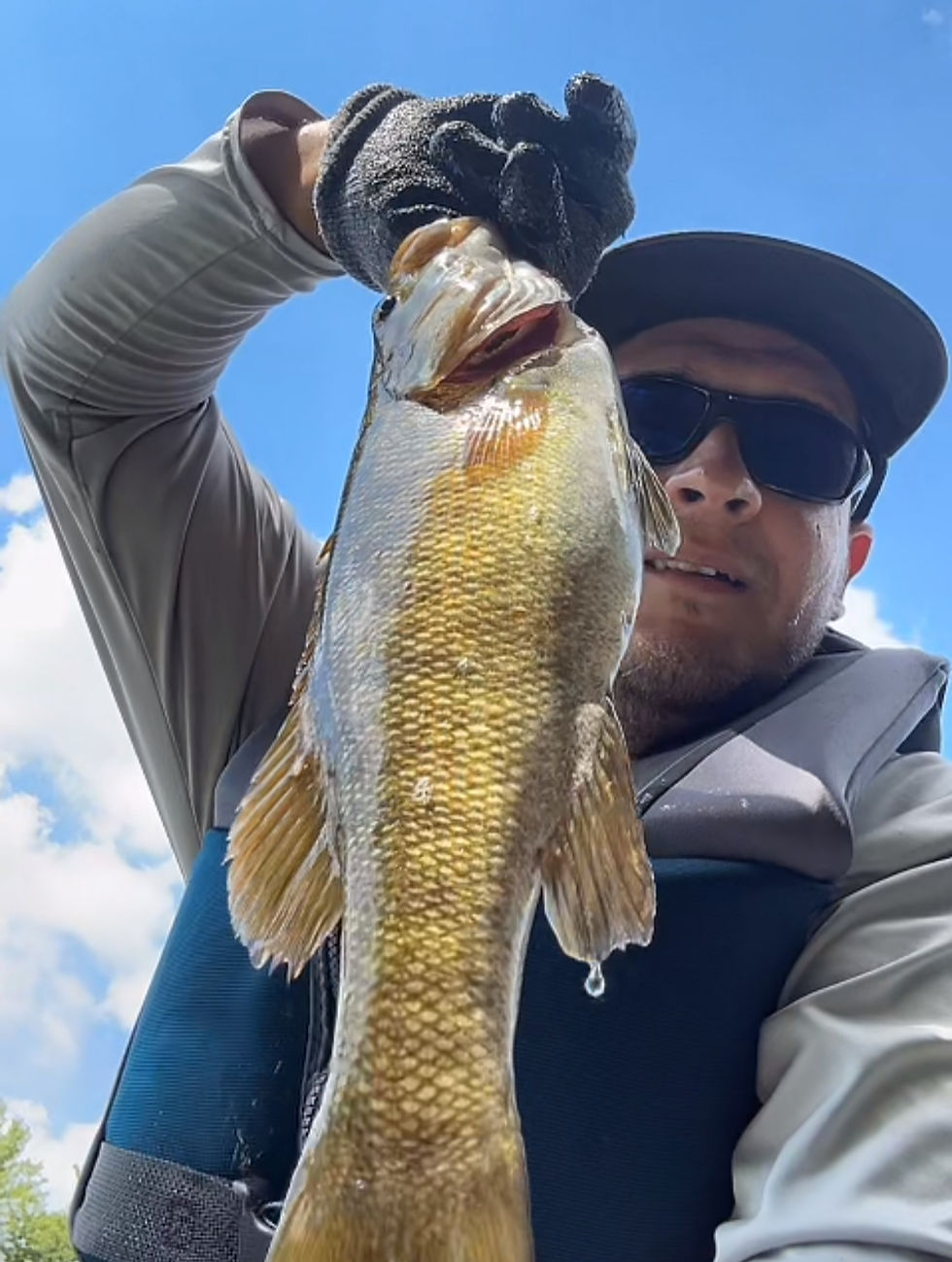Identifying Smallmouth vs Largemouth Bass Tips and Tricks
- misfits outdoors

- Aug 29
- 4 min read
If you love fishing, knowing your catch is crucial. Smallmouth and largemouth bass are two popular species, and being able to tell them apart can make a big difference on your trip. In this post, we’ll walk you through some straightforward tips to help you easily identify these two bass types. With these tricks, you will feel confident in your fishing skills and can enjoy your time on the water even more.
Understanding the Basics
Before we get into the details, it's important to grasp the basic traits of both smallmouth and largemouth bass. While both belong to the same family, they each have unique features to help you tell them apart.
Smallmouth bass are generally found in cooler, clearer waters, often in rivers and lakes where the currents are strong. In contrast, largemouth bass thrive in warmer, murkier waters, commonly found in ponds and quiet lakes. For example, if you are fishing in a lake with a temperature around 70-80°F, you are more likely targeting largemouth bass.
Physical Characteristics
Body Shape
The body shape provides one of the easiest ways to tell these fish apart.
Smallmouth Bass: They have a slender, streamlined body, which aids their agility in the water. This shape makes them swift swimmers and formidable fighters, particularly when hooked.
Largemouth Bass: These fish have a deeper, bulkier body. This robust structure not only contributes to their power but also gives them strength during a fight, especially when trying to escape by diving into cover.

Mouth Size
Mouth size is another vital distinguishing factor.
Smallmouth Bass: As their name indicates, they have smaller mouths that typically do not extend past their eyes, making this a definitive characteristic for identification.
Largemouth Bass: Their mouths are significantly larger and can stretch well beyond their eyes. This feature serves as one of the simplest ways to differentiate them.
Coloration and Markings
The color and markings on these fish also assist in identification.
Smallmouth Bass: They usually sport a bronze or light brown color with dark vertical stripes along their sides, aiding their camouflage in rocky environments.
Largemouth Bass: These bass are recognized for their vibrant green or olive color, complemented by a dark stripe that runs along their sides. This can be particularly useful when trying to spot them.

Habitat Preferences
Familiarity with each species' preferred habitat can assist you in your identification efforts.
Smallmouth Bass: Preferring rocky and clear waters, smallmouth bass are often found where the current is strong, as in rivers or rocky lakes. For example, fishing in places like Lake Erie can yield plenty of smallmouth bass.
Largemouth Bass: These bass thrive in warmer, weedy areas and can often be found lingering around ponds, lakes, and slow-moving rivers. If you frequently fish near vegetation or submerged structures, you are likely casting for largemouth bass.
Behavior and Feeding Habits
Feeding Patterns
Different feeding behaviors can aid in identification while you're fishing.
Smallmouth Bass: Known for their aggressive feeding habits, smallmouths often strike at lures with significant force. They typically feed on smaller fish, crayfish, and insects. For instance, studies show that smallmouth bass in certain regions can consume up to 50% of their body weight in food within a week.
Largemouth Bass: In contrast, largemouth bass are opportunistic feeders who prefer ambushing prey from their hiding spots. Their varied diet includes larger fish, frogs, and even small mammals. This versatility allows them to adapt to various environments.
Fighting Style
Each species exhibits distinctive fighting styles when caught.
Smallmouth Bass: These bass are known for their energetic jumps and quick runs, making for an exhilarating catch.
Largemouth Bass: Largemouths tend to fight harder, often pulling weight and trying to dive into cover. This can create an exciting back-and-forth struggle for anglers.
Tips for Identification on the Water
Use a Fish Identifier App
Modern technology offers apps that help beginners identify different fish species. These apps provide images and descriptions, assisting you in distinguishing smallmouth from largemouth bass.
Observe the Environment
Take a moment to observe your fishing environment. If you’re casting in rocky, clear areas, look for smallmouth bass. If you are surrounded by weeds and murky water, you are likely dealing with largemouth bass.
Ask Fellow Anglers
Do not hesitate to seek advice from more experienced anglers. Many fishermen are happy to share their knowledge on how to spot different fish species and offer valuable tips.
Final Thoughts
Identifying smallmouth and largemouth bass doesn't have to be complicated. By paying attention to their physical traits, preferred habitats, and behaviors, you can easily recognize these two species. Whether you are new to fishing or have some experience, these tips are designed to improve your chances of catching the right fish. So next time you’re out on the water, keep these identifiers in mind and enjoy the thrill of bass fishing.
Happy fishing!


Comments